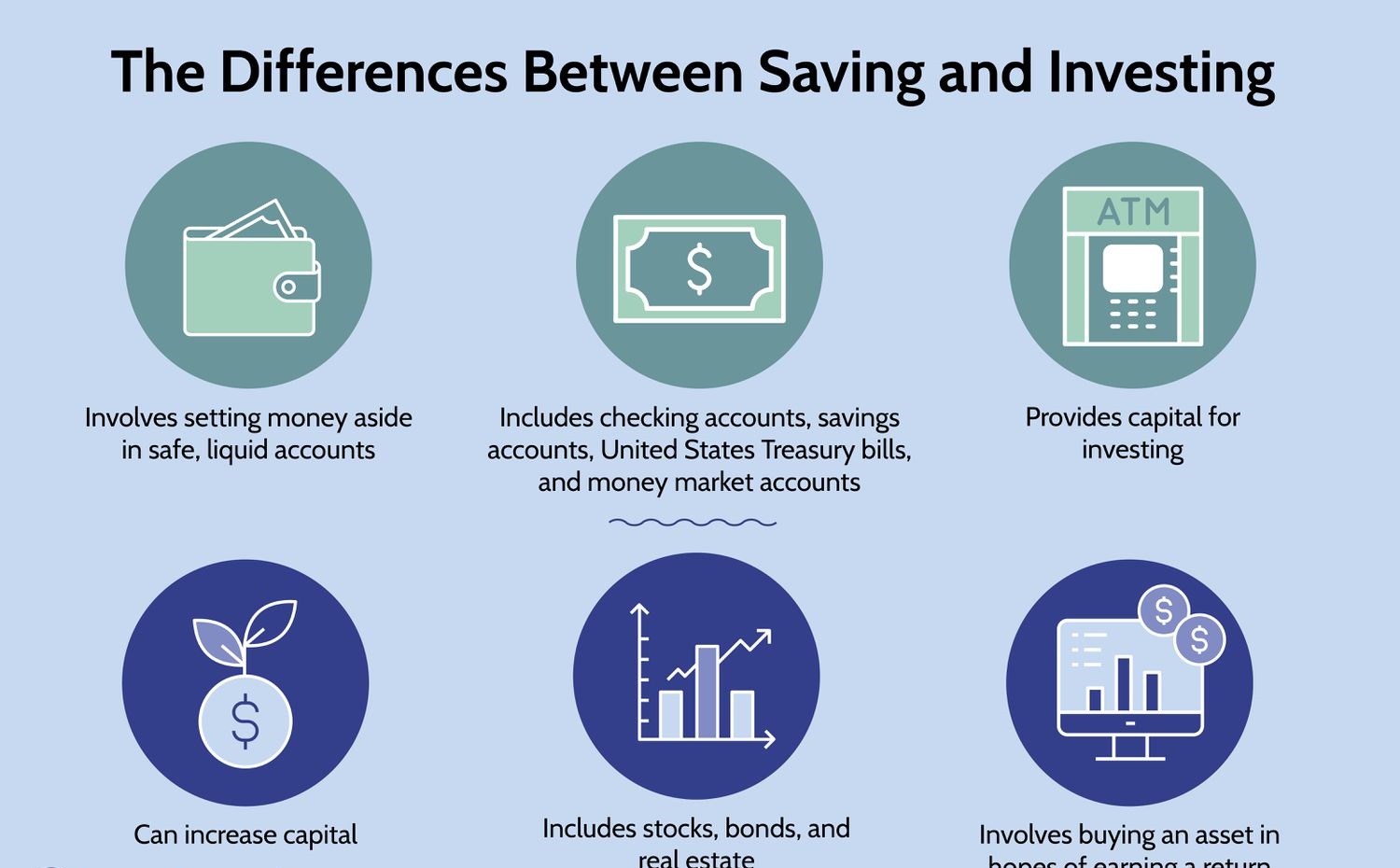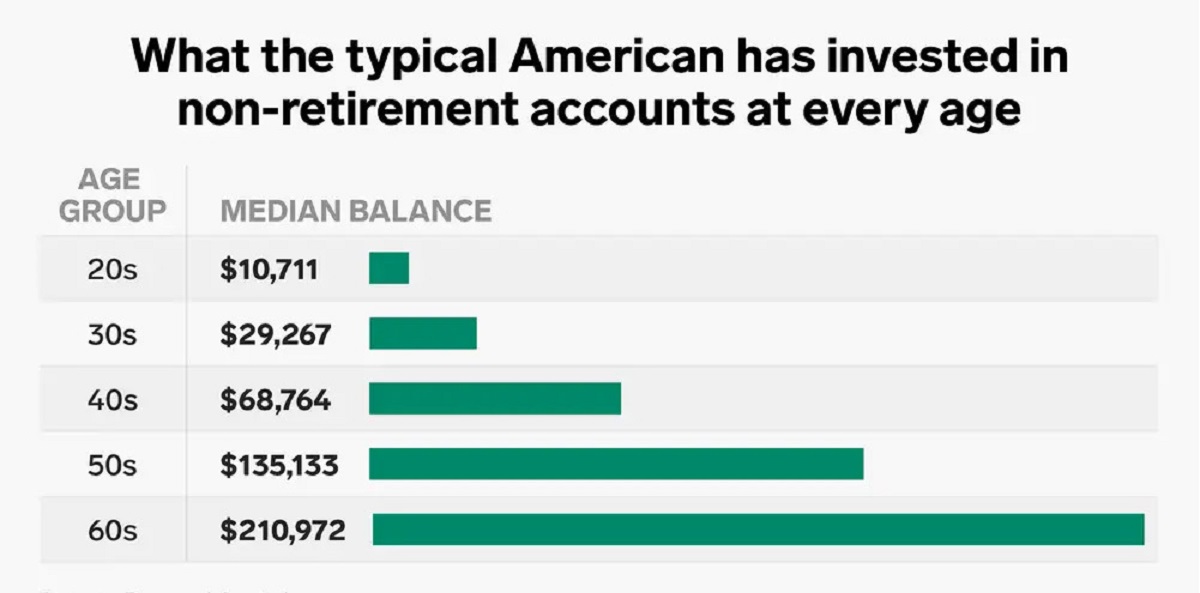Introduction
Savings accounts are a popular investment option for many individuals looking to grow their money while minimizing risk. In the world of investing, where volatility and uncertainty abound, savings accounts are often considered a safe haven to park one’s funds. But what makes savings accounts safer than other investment options? This article aims to delve into the reasons behind the safety of savings accounts and why they are a preferred choice for conservative investors.
A savings account is a type of deposit account offered by banks and financial institutions. It allows individuals to deposit their money and earn interest on those funds. Unlike other investment vehicles such as stocks or bonds, savings accounts typically offer a lower rate of return. However, what they lack in high returns, they make up for with their safety and stability.
How do savings accounts achieve this level of safety? One crucial factor is the Federal Deposit Insurance Corporation (FDIC) insurance, which protects depositors’ funds in case of bank failures. FDIC-insured accounts provide peace of mind, knowing that even if the bank fails, depositor’s funds, up to the insured limit, will be safeguarded. This aspect alone makes savings accounts a significantly safer option compared to other investment vehicles.
Moreover, savings accounts offer stable and predictable returns. The interest rates on these accounts are generally fixed, meaning they do not fluctuate based on market conditions. This predictability allows investors to anticipate and plan for their future earnings. In contrast, other investments often come with inherent risks, such as stock market volatility or bond price fluctuations, which can lead to uncertain returns.
Additionally, savings accounts are associated with a low risk of principal loss. Unlike stock market investments, where the value of shares can rapidly decline, savings accounts provide reassurance that the principal amount deposited is secure. While the potential for high returns may be lower, the risk of losing the initial investment is significantly reduced.
What are savings accounts?
A savings account is a type of deposit account offered by banks and financial institutions to help individuals save and grow their money. It is a secure and accessible way to store funds while earning interest on the deposited amount. Unlike checking accounts, which are primarily used for daily transactions, savings accounts are designed for long-term saving goals.
When opening a savings account, individuals deposit their money into the account, and the bank pays them interest on the deposited funds. The interest rate, which is predetermined by the bank, is typically lower compared to other investment options such as stocks or bonds. However, the trade-off for the lower returns is the stability and safety that savings accounts offer.
Opening a savings account is relatively straightforward. Most banks require individuals to provide basic identification information, such as their name, address, social security number, and employment details. Some banks may also have a minimum deposit requirement to open an account, while others offer no minimum deposit options.
Once a savings account is opened, individuals can deposit or withdraw funds as needed. Many savings accounts provide account holders with an ATM card or debit card, allowing easy access to the funds. Additionally, online banking platforms have made it convenient for individuals to manage their savings accounts, transfer money, and monitor their account activity from the comfort of their homes.
The primary purpose of a savings account is to cultivate the habit of saving and protect the money from unnecessary spending. By keeping funds in a savings account, individuals can separate their savings from their everyday expenses, reducing the temptation to spend it impulsively.
Savings accounts often come with restrictions on the number of withdrawals or transactions that can be made within a specific time period. This limitation encourages individuals to maintain a long-term saving mindset and avoid constant withdrawals, allowing their funds to grow steadily over time.
How do savings accounts work?
Savings accounts work by providing individuals with a secure and interest-bearing place to deposit and grow their money. Here’s a breakdown of how savings accounts function:
1. Opening an account: To open a savings account, individuals typically need to visit a bank branch or apply online. They will need to provide identification documents, such as a driver’s license or passport, along with their personal details and a minimum opening deposit if required.
2. Deposit: Once the account is open, individuals can deposit money into their savings account. This can be done through various methods, such as in-person deposits at a bank branch, direct deposits from their paycheck, or electronic transfers from another bank account.
3. Interest: The money deposited in a savings account earns interest over time. The interest rate is determined by the bank and is typically calculated on a daily or monthly basis. The interest earned is added to the account balance, allowing the funds to grow gradually.
4. Withdrawals: Individuals can withdraw money from their savings account as needed. This can be done through ATM withdrawals, online transfers, or by visiting a bank branch. However, savings accounts often have withdrawal restrictions or limits to encourage long-term saving and discourage excessive spending.
5. Account management: Banks provide various ways to manage savings accounts. This includes online banking platforms, mobile apps, and phone banking services, allowing individuals to monitor their account balance, track transactions, set up automatic transfers, and access other account features conveniently.
6. Fees and charges: While savings accounts are generally fee-free, some banks may impose fees for specific services or if certain conditions are not met. These fees could include charges for maintaining a low balance, excessive withdrawals, or additional services such as ordering replacement debit cards.
7. Compounding interest: One of the key benefits of savings accounts is the power of compound interest. As interest is earned on the initial deposit and accumulated interest, the account balance grows exponentially over time. This can help individuals maximize their savings and achieve their long-term financial goals.
Overall, savings accounts serve as a reliable tool for individuals to save and grow their money. They provide a secure place to store funds, offer interest earnings, and allow for easy access to money when needed.
Advantages of savings accounts as a safe investment
Savings accounts are often regarded as a safe investment option due to the numerous advantages they offer. Here are some key advantages of savings accounts as a safe investment:
1. FDIC insurance: One of the primary advantages of savings accounts is the protection provided by the Federal Deposit Insurance Corporation (FDIC). FDIC insurance guarantees that depositors’ funds, up to $250,000 per depositor, are safeguarded in case of bank failures. This level of insurance coverage provides peace of mind and makes savings accounts an incredibly secure investment choice.
2. Stable and predictable returns: Savings accounts offer stable and predictable returns, which is particularly beneficial for risk-averse investors. Unlike other investments with variable returns, such as stocks or bonds, savings accounts provide a fixed interest rate. This predictability allows investors to plan and budget their finances effectively.
3. Low risk of principal loss: Savings accounts come with a low risk of losing the principal amount deposited. While other investments may fluctuate in value, savings accounts provide reassurance that the initial investment remains secure. This makes savings accounts an attractive option for individuals who prioritize capital preservation.
4. Easy access to funds: One of the significant advantages of savings accounts is the ease of accessing funds. Unlike some investments that can have restrictions or penalties for early withdrawals, savings accounts allow individuals to withdraw their money whenever needed. This accessibility makes savings accounts a practical choice for emergency funds or short-term financial goals.
5. Liquidity: Savings accounts offer high liquidity, meaning that funds can be readily converted into cash without significant delays or penalties. This liquidity allows individuals to use their savings for unexpected expenses or take advantage of investment opportunities that may arise.
6. Diversification: Investing in savings accounts adds diversification to one’s investment portfolio. By allocating a portion of their funds to savings accounts, investors can balance out more aggressive or higher-risk investments. This diversification can help mitigate overall portfolio risk and provide stability during market fluctuations.
7. The power of compound interest: Savings accounts enable individuals to benefit from compound interest. As interest is earned on the initial deposit and the accumulated interest, the account balance grows over time. The longer the funds remain in the account, the more significant the impact of compound interest, allowing individuals to maximize their savings and achieve their financial goals.
In summary, savings accounts offer several advantages that make them a safe and appealing investment option. The FDIC insurance, stable returns, low risk of principal loss, easy access to funds, liquidity, diversification, and the power of compound interest all contribute to the attractiveness and safety of savings accounts for conservative investors.
FDIC insurance
One of the primary advantages of savings accounts is the protection provided by the Federal Deposit Insurance Corporation (FDIC). Established in 1933, the FDIC is an independent agency of the U.S. government that provides deposit insurance to depositors in banks and savings associations.
FDIC insurance is crucial for the safety of savers’ funds, offering a level of protection that other investment options may lack. It provides peace of mind, knowing that even if a bank fails, depositors’ funds will be safeguarded up to the insured limit.
The FDIC insures deposits in member banks up to $250,000 per depositor, per account category. This coverage includes various types of accounts, such as savings accounts, checking accounts, money market deposit accounts, and certificates of deposit (CDs).
FDIC insurance not only safeguards the principal amount deposited but also covers accrued interest. This means that even if a bank fails, depositors will not lose any interest earned on their funds. The combination of principal protection and interest coverage makes savings accounts an incredibly secure investment choice.
In the event of a bank failure, the FDIC will step in to ensure that depositors have access to their insured funds. They will either transfer the accounts to another FDIC-insured institution or provide customers with a check for the insured amount.
It’s important to note that the $250,000 limit exists per depositor per institution. Depositors with accounts in different banks can have separate coverage on each account, increasing their overall protection. Additionally, certain account types, such as joint accounts, have different coverage limits.
FDIC insurance extends to a vast majority of banks and savings associations operating in the United States. However, it is always prudent for savers to confirm that their chosen bank is a member of the FDIC and their accounts will be insured before opening an account.
Overall, FDIC insurance plays a vital role in the safety of savings accounts. It provides a guarantee that even in the unlikely event of a bank failure, an individual’s savings are protected up to the insured limit, ensuring the security of their hard-earned money.
Stable and predictable returns
Another significant advantage of savings accounts is the stable and predictable returns they offer to investors. Unlike other investment options like stocks or bonds, savings accounts provide a fixed interest rate, ensuring a consistent return on the deposited funds.
Having a stable and predictable return is particularly beneficial for risk-averse investors who prefer to have clarity and certainty in their investment outcomes. With savings accounts, individuals can confidently estimate the earnings on their savings, allowing them to plan and budget their finances effectively.
The interest rate on savings accounts is predetermined by the bank and typically remains unchanged over a specific period. Although the rates may vary among different banks or account types, they generally offer a competitive yield compared to other low-risk investment options.
The stability of the returns on savings accounts eliminates the concern of market volatility or economic fluctuations that may negatively impact investments like stocks or mutual funds. This stability provides a sense of financial security, especially for individuals who depend on their savings for short-term goals or emergency funds.
Furthermore, the fixed interest rate allows individuals to gauge the growth potential of their savings accurately. They can calculate the future value of their savings based on the interest rate and the compounding period. This predictability empowers investors to make informed decisions about their financial goals and embark on a realistic savings journey.
While savings accounts may not provide exceptionally high returns compared to some riskier investments, their stability and predictability make them an attractive option for conservative investors. The peace of mind that comes with knowing the exact return on investment allows individuals to have a clear understanding of the growth potential of their savings.
It’s important to note that interest rates on savings accounts can change over time, depending on market conditions and economic factors. Therefore, it’s advisable for individuals to monitor interest rate movements and explore opportunities to switch savings accounts if better rates become available.
In summary, the stable and predictable returns offered by savings accounts make them an ideal choice for risk-averse individuals. The fixed interest rates provide clarity and certainty, allowing investors to plan and budget effectively. While the returns may not be as high as other investment options, the stability of savings accounts offers financial security and peace of mind in an unpredictable economic landscape.
Low risk of principal loss
Savings accounts are known for their low risk of principal loss, making them an attractive investment option for those concerned about preserving their initial investment. Unlike other investment vehicles such as stocks or bonds, savings accounts provide a high level of capital protection.
When individuals deposit their money into a savings account, they entrust it to the banking institution. The bank, in turn, assumes the responsibility of safeguarding these deposits and ensuring their safekeeping. This means that the deposited funds are not subject to the same level of risk as investments in the stock market or other volatile assets.
Unlike stocks, whose values can fluctuate wildly, a savings account’s value remains stable. The principal amount deposited is guaranteed, meaning that even if there are market downturns or economic uncertainties, individuals can rest assured that their initial investment remains intact.
This low risk of principal loss is particularly appealing for cautious investors who prioritize capital preservation over high-risk, high-reward investments. By choosing a savings account, individuals can minimize their exposure to potential losses and maintain a sense of financial security.
Furthermore, the low risk of principal loss associated with savings accounts is particularly beneficial for those with short-term financial goals or emergency funds. These individuals need to have ready access to their funds without the worry of a sudden and significant decline in value that might occur with other investments.
While the potential for significant capital appreciation may be lower compared to riskier investments, such as stocks or real estate, the peace of mind that comes with the low risk of losing the initial investment is invaluable to conservative investors.
It’s important to note that while savings accounts provide a low risk of principal loss, inflation can erode the purchasing power of the deposited funds over time. The interest earned on savings accounts might not always keep up with inflation rates, potentially reducing the real value of the savings over the long term. However, for short-term or immediate liquidity needs, the low risk of principal loss outweighs the impact of inflation.
In summary, savings accounts offer a low risk of principal loss, providing investors with peace of mind and capital preservation. The stability and security associated with savings accounts make them an attractive option for those who prioritize protecting their initial investment and have short-term financial goals or emergency funds.
Easy access to funds
One of the major advantages of savings accounts is the easy access to funds they provide. Unlike other long-term investment options, savings accounts offer individuals the flexibility to withdraw their money whenever needed without any significant restrictions or penalties.
When individuals open a savings account, they have the peace of mind that their funds are easily accessible. Most banks offer various convenient options for accessing funds, including ATM withdrawals, online transfers, and in-person transactions at bank branches.
This accessibility makes savings accounts an ideal choice for individuals who may require their funds for emergencies or unexpected expenses. Whether it’s a medical bill, home repair, or any unforeseen financial need, individuals can turn to their savings accounts to access the necessary funds without delay.
Furthermore, the ease of accessing funds from a savings account ensures that individuals do not face any hurdles when it comes to using their savings for short-term goals. Whether it’s saving up for a vacation, a down payment on a home, or a major purchase, individuals can easily tap into their savings accounts to achieve their desired goals.
In addition to traditional banking services, the rise of online banking has revolutionized the accessibility of funds in savings accounts. With just a few clicks on a computer or taps on a mobile device, individuals can transfer money, monitor account balances, and even deposit checks into their savings accounts anytime and anywhere.
Moreover, banks often provide account holders with ATM or debit cards linked to their savings accounts. This enables individuals to withdraw cash directly from an ATM or make purchases at various merchants, using the funds available in their savings accounts.
It’s important to note that while savings accounts offer easy access to funds, some accounts may have limitations on the number of withdrawals or transactions allowed within a specific time frame. These limitations are in place to encourage individuals to maintain long-term saving habits and discourage excessive spending from their savings accounts.
Overall, the ease of access to funds is a significant advantage of savings accounts. With the ability to withdraw money conveniently through various channels and without significant restrictions, individuals can fully utilize their savings for emergencies, short-term goals, or planned expenses.
Liquidity
One of the key advantages of savings accounts is the high level of liquidity they offer. Liquidity refers to the ease with which an asset can be converted into cash without incurring substantial costs or delays.
Savings accounts are highly liquid, meaning that individuals can access their funds quickly and conveniently when needed. Unlike investments like real estate or certain types of retirement accounts, which may have restrictions or penalties for early withdrawals, savings accounts allow for immediate access to cash without any significant limitations.
This liquidity makes savings accounts an ideal choice for individuals who prioritize having readily available funds for various purposes. Whether it’s dealing with unexpected expenses, seizing investment opportunities, or covering short-term financial needs, individuals can rely on their savings accounts to provide the necessary liquidity.
Access to the funds in a savings account can be facilitated through a range of banking services. This includes ATM withdrawals, online transfers, or visiting a bank branch for in-person transactions. Additionally, many savings accounts come with the added convenience of debit cards or check-writing capabilities, allowing individuals to make purchases or payments directly from their savings funds.
The high liquidity of savings accounts also offers a sense of financial security for individuals. Knowing that their funds are easily accessible in case of emergencies or unforeseen circumstances provides peace of mind and a safety net during challenging times.
Furthermore, the liquidity of savings accounts allows individuals to take advantage of investment opportunities as they arise. Whether it’s an attractive stock market opportunity, a limited-time offer, or an unexpected chance to make a major purchase at a discounted price, individuals with liquid savings can swiftly access their funds to seize these opportunities.
However, it’s essential to strike a balance between liquidity and long-term financial goals. While having liquid savings for immediate financial needs is crucial, individuals should also consider the growth potential of their funds over time. Balancing liquidity with wise investment choices helps individuals maximize their financial well-being and achieve their long-term objectives.
In summary, savings accounts offer high liquidity, allowing individuals to access their funds quickly and easily. The ability to convert savings into cash without significant restrictions or penalties makes savings accounts an attractive choice for individuals who prioritize having readily available funds for emergencies or short-term financial needs. The liquidity of savings accounts offers financial security and the flexibility to seize investment opportunities as they arise.
Diversification
Diversification is a fundamental principle of investing, and savings accounts can play a vital role in achieving a well-diversified investment portfolio. By adding savings accounts to their investment mix, individuals can balance out riskier or more volatile investments, reducing overall portfolio risk.
One of the primary benefits of diversification is that it helps spread risk across different asset classes. While savings accounts may not provide high returns compared to riskier investments like stocks or real estate, they offer stability and a low risk of loss. This stability can act as a buffer during market fluctuations and economic downturns.
Integrating savings accounts into an investment portfolio can help reduce the potential impact of severe market downturns on an individual’s overall wealth. The stability and predictable returns of savings accounts can provide a safety net during times of market volatility.
Furthermore, diversification through savings accounts can mitigate investment risks associated with specific industries or sectors. For example, if an individual heavily invests in a particular industry that experiences a downturn, the stable returns from savings accounts can help balance any loss incurred from the concentrated investment.
Savings accounts, being low-risk and highly liquid assets, offer individuals the flexibility to rebalance their investment portfolio as needed. If certain asset classes or investments become overvalued or pose a higher risk, individuals can shift funds into their savings accounts to maintain a more balanced and diversified portfolio.
In addition, diversification with savings accounts can provide individuals with peace of mind. Knowing that a portion of their portfolio is invested in low-risk savings accounts helps individuals cope with market turbulence and reduces the emotional impact of short-term market volatility.
It’s important to note that while diversification with savings accounts offers stability and reduces risk, it may also limit potential returns. By allocating a portion of their funds to savings accounts, individuals forego the possibility of earning higher returns that riskier investments may offer. However, this trade-off is often deemed worthwhile for conservative investors who prioritize capital preservation and a lower risk tolerance.
In summary, savings accounts contribute to diversification by providing a stable investment option that balances the volatility and risk present in other investment vehicles. By integrating savings accounts into an investment portfolio, individuals can add a low-risk component that offers stability, liquidity, and peace of mind. Diversification with savings accounts helps mitigate risk and provides a well-rounded investment strategy for conservative investors.
The power of compound interest
One of the most compelling advantages of savings accounts is the concept of compound interest. Compound interest refers to the principle of earning interest not only on the initial deposit but also on the accumulated interest over time. This compounding effect can significantly boost the growth of savings accounts in the long run.
When individuals deposit their money into a savings account, they start earning interest on the initial principal amount. As time goes by and the interest is added to the account balance, the interest earned in subsequent periods is calculated based on the new total balance, including the previously earned interest. This compounding process leads to exponential growth of the savings over time.
The power of compound interest becomes particularly evident over long periods. As interest continues to compound, the growth accelerates, and even small interest rate differentials can have a substantial impact on the final account balance.
For example, let’s consider two individuals who each start with a $10,000 deposit in a savings account. Investor A chooses an account with a 2% interest rate compounded annually, while Investor B opts for an account with a 1.5% interest rate compounded quarterly.
After 10 years, Investor A would have a balance of approximately $12,190, whereas Investor B would have a balance of approximately $12,380. Despite the difference in interest rates being only 0.5%, the compounding effect results in a significant disparity in the final account balances.
This power of compound interest makes savings accounts an attractive long-term investment option. The longer the funds remain in the account, the more pronounced the effect of compounding becomes.
Additionally, compound interest is particularly beneficial for individuals who have a consistent saving habit. By regularly adding to their savings account, individuals can expedite the compounding process and see their savings grow even faster.
Compound interest can also be utilized strategically for specific financial goals. By starting early and allowing the interest to compound over a longer duration, individuals can save for major life events like retirement, education, or purchasing a home.
It is important to note that the power of compound interest is further amplified by higher interest rates. By seeking banks or financial institutions offering competitive interest rates, individuals can enhance the growth potential of their savings accounts.
In summary, the power of compound interest is a significant advantage of savings accounts. By continuing to earn interest on the initial deposit and the accumulated interest over time, savings accounts offer exponential growth potential for long-term savers. By harnessing the power of compounding, individuals can accumulate substantial savings and work towards their financial goals.
Disadvantages of savings accounts compared to other investments
While savings accounts offer numerous advantages, it’s important to acknowledge their limitations and consider the potential drawbacks when comparing them to other investment options. Here are some disadvantages of savings accounts compared to other investments:
1. Lower potential for high returns: Savings accounts typically offer lower returns compared to riskier investments such as stocks, real estate, or mutual funds. The conservative nature of savings accounts limits their growth potential, making them less appealing for individuals seeking significant capital appreciation.
2. Inflation and purchasing power: One of the shortcomings of savings accounts is their susceptibility to the effects of inflation. Inflation erodes purchasing power over time, as it erodes the real value of savings. Generally, the interest earned on savings accounts may not keep pace with inflation, resulting in a loss of purchasing power over the long term.
3. Opportunity cost: By allocating a significant portion of funds towards savings accounts, individuals may miss out on potential opportunities for higher returns offered by other investment options. This trade-off between low-risk, low-return savings accounts and higher-risk, higher-return investments must be carefully considered based on individual financial goals and risk tolerance.
4. Limited growth potential: While compound interest can contribute to the growth of savings accounts over time, there is a ceiling to how much they can grow. Unlike investments in businesses or real estate that have the potential for exponential growth, savings accounts have a finite growth potential due to their fixed interest rates and conservative nature.
5. Inability to keep up with rising interest rates: If interest rates rise in the economy, savings accounts may not offer competitive yields compared to other investments. This means that the real return on savings accounts may diminish when interest rates increase, potentially leading to missed opportunities for higher returns.
6. Emotional impact of low returns: The lower returns of savings accounts compared to other investments may lead to emotional dissatisfaction for individuals who strive for higher returns. It can be frustrating to see one’s savings grow at a slower pace while witnessing others achieve greater financial gains through riskier investments.
7. Tax considerations: Savings account interest is generally subject to income tax. Depending on an individual’s tax bracket, this may reduce the overall returns on savings accounts. Other investment options, such as certain retirement accounts or tax-efficient investments, may offer tax advantages that can enhance overall returns.
Despite these disadvantages, savings accounts remain a popular choice for conservative investors seeking capital preservation, ease of access to funds, and stability. It’s essential to carefully assess individual financial goals, risk tolerance, and investment time horizon when deciding on the appropriate allocation of funds between savings accounts and other investment options.
Lower potential for high returns
One significant disadvantage of savings accounts compared to other investment options is their lower potential for high returns. While savings accounts offer stability and security, they generally provide lower yields compared to riskier investments such as stocks, real estate, or mutual funds.
The conservative nature of savings accounts limits their growth potential. The interest rates offered by banks on savings accounts are usually modest, reflecting the low-risk nature of these investments. As a result, the returns generated from savings accounts may not match the substantial gains that can be achieved through more aggressive investment strategies.
For individuals seeking significant capital appreciation, relying solely on savings accounts may not be the most effective approach. Higher-risk investments, such as stocks or ventures in growing industries, have the potential to deliver substantial returns over time.
It is important to note that the lower returns of savings accounts are often a trade-off for stability. While investments like stocks may offer the potential for high returns, they also come with increased volatility, making them susceptible to market downturns and fluctuations. Savings accounts, on the other hand, provide a safer haven for funds with a more predictable rate of return.
For individuals with a longer investment horizon and a higher risk tolerance, allocating a portion of their funds to riskier assets may be more appropriate. By diversifying their investment portfolio, individuals can potentially mitigate the lower return potential of savings accounts while balancing the overall risk exposure.
An additional consideration is that the impact of inflation should be taken into account when evaluating the potential returns of savings accounts. Over time, the purchasing power of money is eroded by inflation. If the interest earned on a savings account does not outpace the inflation rate, the real value of the savings may decline. This phenomenon can further reduce the returns in terms of the individual’s ability to buy goods and services in the future.
Despite the lower potential for high returns, savings accounts still play a vital role in personal finance. They offer a low-risk avenue to preserve capital and provide a secure place to store funds for short-term goals or emergency purposes. Savings accounts can serve as a foundation for building a financial cushion and as a complement to more aggressive investment strategies in a well-diversified portfolio.
In summary, while savings accounts offer stability and security, they generally come with a lower potential for high returns compared to riskier investment options. Their conservative nature makes them more suitable for individuals seeking capital preservation rather than substantial growth. Considering individual financial goals and risk tolerance is essential in determining the appropriate allocation between savings accounts and other investment vehicles.
Inflation and purchasing power
Another significant disadvantage of savings accounts compared to other investment options is the impact of inflation on the purchasing power of the funds. Inflation refers to the general increase in the prices of goods and services over time, which erodes the value of money. While savings accounts offer stability, the returns they generate may not always keep up with the inflation rate.
As the cost of living rises due to inflation, the amount of goods and services that can be purchased with a fixed amount of money decreases. This means that if the interest earned on a savings account does not outpace the inflation rate, the real value of the savings may actually decline. This phenomenon is referred to as a loss of purchasing power.
For example, if the average inflation rate is 2% per year, but the interest earned on a savings account is only 1%, the real value of the savings is effectively decreasing by 1% each year in terms of what it can purchase. Over time, this erosion of purchasing power can significantly impact the long-term value of savings.
Inflation becomes particularly relevant when considering the long-term goals and investment horizon. If savings are intended for retirement or other distant objectives, the impact of inflation over several decades can be substantial. Without higher returns that outpace inflation, the savings may not provide the same level of financial security or meet future financial needs as intended.
Moreover, when comparing savings accounts to investments such as stocks, real estate, or mutual funds, these options may offer the potential for higher returns that can counteract the impact of inflation. Historically, equities have shown a greater ability to outpace inflation over the long term, providing growth that helps investors maintain or even increase their purchasing power.
However, it’s important to note that while other investments may have the potential to counteract inflation, they often come with increased risk and volatility. Savings accounts, with their lower returns, offer stability and security, even if they can’t match the inflation-beating potential of riskier assets.
To mitigate the impact of inflation, individuals may consider a diversified investment approach. By combining savings accounts with investments that have the potential for higher returns, such as equities or inflation-protected securities, individuals can create a more balanced portfolio that seeks to preserve purchasing power while managing risk.
In summary, savings accounts may not always keep pace with inflation, leading to a decline in the real value of savings over time. While the stability of savings accounts provides a safe place to store funds, their lower returns can result in a loss of purchasing power. It’s important for individuals to consider the impact of inflation when determining their investment strategy and to diversify their portfolio to include assets that have the potential to counteract inflation and maintain or grow their purchasing power.
Opportunity cost
One significant disadvantage of savings accounts compared to other investments is the concept of opportunity cost. Opportunity cost refers to the potential gain or benefit that is foregone by choosing one alternative over another. By allocating a significant portion of funds to savings accounts, individuals may miss out on potential opportunities for higher returns offered by other investment options.
While savings accounts provide stability and low risk, they often come with lower yields compared to riskier investments such as stocks, bonds, or real estate. These alternative investments have the potential for higher returns but also carry a higher level of risk.
When individuals allocate a large portion of their funds to savings accounts, they forgo the potential to earn higher returns that might be achievable through other investments. For example, if an individual has a long-term investment horizon and a higher risk tolerance, investing in stocks may provide the opportunity for capital appreciation and greater long-term returns.
It’s important to consider individual financial goals, risk tolerance, and investment time horizon when evaluating the opportunity cost of investing in savings accounts. For individuals with a lower risk appetite and short-term financial goals, the stability and accessibility of savings accounts may outweigh the potential for higher returns.
However, individuals who have a longer investment horizon and are comfortable with taking on more risk may find that the opportunity cost of relying solely on savings accounts is significant. By not exploring alternative investment opportunities, such as diversified stock portfolios, real estate investments, or retirement accounts with higher return potential, individuals may miss out on the potential for wealth accumulation over time.
Another factor to consider is that higher returns usually come with increased volatility and market fluctuations. Riskier investments tend to experience periods of market downturns, which can result in temporary losses or reduced portfolio value. Savings accounts, on the other hand, offer stability and peace of mind during turbulent market conditions.
It is important to strike the right balance between risk and reward based on individual financial circumstances and goals. Allocating a portion of funds to savings accounts can serve as a foundation for financial security, emergency funds, or short-term goals. Simultaneously, exploring other investment options can help individuals capitalize on potential opportunities and maximize their overall returns.
In summary, the opportunity cost of investing in savings accounts lies in potentially forgoing higher returns offered by riskier investments. Individuals should carefully consider their financial goals, risk tolerance, and investment time horizon to determine the appropriate allocation between savings accounts and other investment opportunities. Balancing stability with the potential for higher returns is key in making informed investment decisions.
Conclusion
Savings accounts offer unique advantages as a safe investment option. They provide stability, security, and easy access to funds, making them an attractive choice for conservative investors. The Federal Deposit Insurance Corporation (FDIC) insurance ensures the protection of deposited funds, adding an extra layer of security.
With predictable returns and a low risk of principal loss, savings accounts offer individuals the peace of mind of knowing that their initial investment is secure. The high liquidity of savings accounts allows for easy access to funds, making them suitable for emergency funds and short-term financial goals. Additionally, savings accounts offer the power of compound interest, allowing individuals to watch their savings grow steadily over time.
While savings accounts come with numerous advantages, they also have limitations compared to other investment options. The lower potential for high returns may restrict the growth of savings compared to riskier investments. Inflation and its impact on purchasing power must be considered when assessing the long-term value of savings accounts. Moreover, the opportunity cost of relying solely on savings accounts means potentially missing out on higher returns offered by alternative investments.
It’s essential for individuals to consider their financial goals, risk tolerance, and investment time horizon when choosing between savings accounts and other investment avenues. Balancing stability, growth potential, and risk is crucial in creating a well-rounded investment portfolio that aligns with individual needs and preferences.
In summary, savings accounts serve as a safe haven for individuals looking to preserve capital, maintain liquidity, and achieve short-term financial goals. They offer stability and a low-risk investment option, catering to the needs of conservative investors. While they may not provide the same growth potential as riskier investments, savings accounts play a vital role in financial planning and provide a secure foundation for individuals’ financial well-being.

























